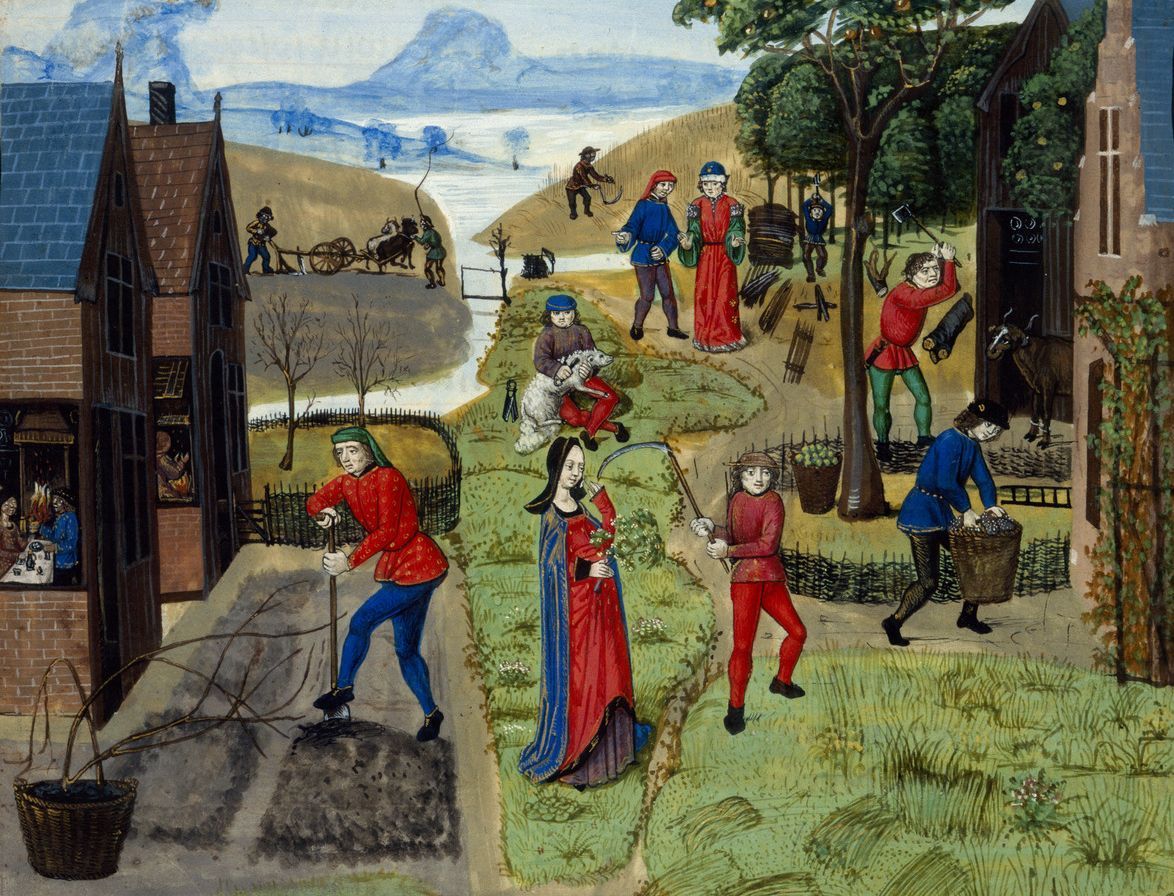Once upon a rhyme
A nursery rhyme about taxes? Discover the dark origin of 10 classics
Published on June 8, 2025
 Credit: Susan Holt Simpson
Credit: Susan Holt Simpson
We all have those nursery rhymes etched in our memory, verses that take us straight back to our childhood. But behind some of those catchy, cheerful tunes lie surprisingly dark and mysterious origins rooted in real-life history! Join us to discover the hidden stories behind the most popular nursery rhymes!
The Muffin Man
 Credit: David Todd McCarty
Credit: David Todd McCarty
Although it's a staple in preschools, this rhyme is believed to have originated from a rather sinister urban legend. According to the myth, in 16th-century London, there was a baker named Frederic Thomas Lynwood, who had a creepy nickname: "the Dicer of Drury Lane." As the tale goes, this man was said to be a dangerous criminal who used muffins to lure his victims!
Here We Go Round the Mulberry Bush
 Credit: Larry Farr
Credit: Larry Farr
Making a circle to the rhythm of "Here We Go Round the Mulberry Bush" is a childhood classic. But once you learn the origin of this nursery rhyme, the lyrics might take on a whole new meaning. It's believed that "the bush" was actually a mulberry tree in the center of the yard at Wakefield Prison in England. There, female inmates would circle the tree exercising, or repeating the same domestic chores day after day.
Ring Around the Rosie
 Credit: Aleksandar Kyng
Credit: Aleksandar Kyng
"Ring around the rosie, pocket full of posies!" Sound familiar? Of course it does! But there might be a tragic story behind this animated rhyme.
The bubonic plague of the 14th century, also known as the "Black Death," claimed a staggering 25 to 50 million lives in Europe. It's believed that this catastrophic event is reflected in the lines of this famous nursery rhyme: The "ring around the rosie" could refer to the red, circular rash that appeared on the skin of those infected, and suddenly, the line "we all fall down" hits differently once you know where it may have come from.
Pop Goes the Weasel
 Credit: Peter Neumann
Credit: Peter Neumann
"Pop Goes the Weasel" is a classic, though trying to make sense of its lyrics isn't exactly easy. The confusion might come down to how language has evolved over time, particularly slang. It seems that "weasel" was once a common slang term for a fur coat in England before the 19th century. This rhyme is believed to have originated in the financial struggles of the time, where the less privileged classes would sell their weasels to get by.
Jack and Jill
 Credit: Jonas Dücker
Credit: Jonas Dücker
The symbolism behind Jack and Jill hides more than you think. While there are several theories -one even involving a tragic love story- many believe the rhyme's origin is tied to a monarch's decision in the 16th century. Jack and Jill may refer to Richard Empson and Edmund Dudley, financial advisors and ministers to King Henry VII of England. As money collectors, they were not very popular, especially among the privileged classes. When King Henry VIII took office, they were accused of treason: One fell down first, and his partner came tumbling after.
Baa Baa Black Sheep
 Credit: Jonathan Greenaway
Credit: Jonathan Greenaway
The catchy and fun "Baa Baa Black Sheep" is also one of the most popular. The most widely accepted version of its origin has to do with taxes! That's right; in the 13th century, King Edward I of England imposed a "sheep tax," which required that a portion of all wool produced be given to the monarchy. Thus, in the rhyme, the master and the dame could represent the monarchy, which benefited from this rule at the expense of the people.
Ladybird, Ladybird
 Credit: Charlotte Descamps
Credit: Charlotte Descamps
"Ladybird, ladybird, fly away home / Your house is on fire and your children are gone," goes the nursery rhyme "Ladybird, Ladybird," well known in many English-speaking countries. There are two main theories about its origin -one more obscure than the other- and it's the darker one that draws our attention. It's believed that the rhyme may be related to the religious conflicts of 16th-century England, with the "ladybird" symbolizing persecuted Catholics during the English Reformation.
Rock-A-Bye Baby
 Credit: Piotr Makowski
Credit: Piotr Makowski
We've all heard "Rock-a-bye Baby" at one point or another; it's one of the most famous nursery rhymes. Though it's now sung as a gentle lullaby, the rhyme has roots in deep political conflict and change. In 17th-century England, the Catholic King James II was overthrown and replaced by the Protestant rulers William and Mary. So, in the rhyme, the "tree top" and the "branch" symbolize royal power, the "wind" represents the Protestant forces, and the "baby" is believed to refer to the overthrown king.
Humpty Dumpty
 Credit: Олег Мороз
Credit: Олег Мороз
Apparently, the English Civil War played a key role in the emergence of one of the most well-known nursery rhymes: "Humpty Dumpty." As we know, Humpty Dumpty had a great fall, and all the king's horses and all the king's men couldn't put Humpty together again. Thus, "Humpty" would represent the mandate of King Charles I, who was pressured and overthrown by parliamentary forces.
Three Blind Mice
 Credit: Nikolett Emmert
Credit: Nikolett Emmert
We must tell you that the origins of this fun nursery rhyme also come from infamous historical facts. It's believed that the "three blind mice" represent three Protestant bishops who were persecuted and sentenced to death under the reign of Queen Mary I of England, portrayed in the rhyme as the "farmer's wife." Their "blindness" is thought to symbolize their rejection of Catholicism. Pretty deep for a nursery rhyme, right?










